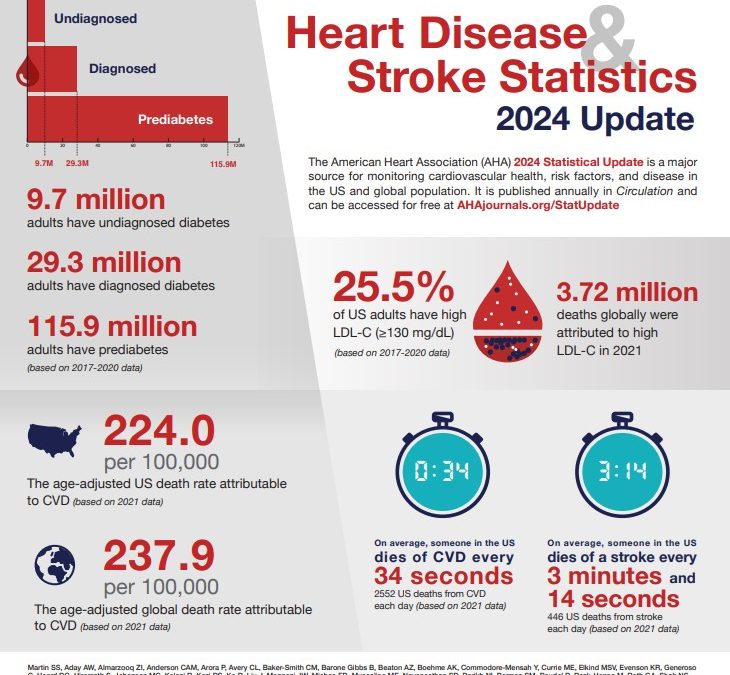
Research & Data Services
February 12-16, 2024
#LoveData24
Tuesday, February 13, 2024 – Blog Post by Tiffany Grant, PhD, CDE
Today we will focus on health disparities. The term health disparity refers to differences in health and health care between groups that typically stem from broader inequities. Multiple definitions of health disparity exist including:
Healthy People 2030 definition of health disparity
A particular type of health difference that is linked with social, economic, and/or environmental disadvantage,” and that adversely affects groups of people who have systematically experienced greater obstacles to health.
Centers for Disease Control and Prevention definition of health disparity
Preventable differences in the burden, disease, injury, violence, or in opportunities to achieve optimal health experienced by socially disadvantaged racial, ethnic, and other population groups and communities.
*Note that each definition refers to differences, and these differences are driven by a number of factors, including genetics, health behaviors, social and environmental factors, and access to health care.
Health disparities exist across all demographics in the US, and addressing them is essential to not only to those impacted, but to the overall health our our nation. Health disparties place a significant financial burden on individual, families, and the health care system.
Heart disease has been the number one cause of death for the last 100 years. In 2021 heart disease and stroke (5th leading cause of death) took more lives in the US than all forms of cancer and lower respiratory disease.

The above data was derived from the 2024 Heart Disease and Stroke Statistics: A Report of US and Global Data From the American Heart Association. The full article can be found here:
https://www.ahajournals.org/doi/epdf/10.1161/CIR.0000000000001209
“According to the 2024 statistical update, 46.7% of U.S. adults have high blood pressure. Yet, 38% those with high blood pressure are unaware that they have it. In the past 10 years, the age-adjusted death rate from high blood pressure increased 65.6% and the actual number of deaths rose 91.2%.
High blood pressure is a leading risk factor for heart disease and stroke, and yet with proper treatment and management it can be controlled and your risk for cardiovascular disease can be greatly reduced. The first step toward reducing any risk factor for cardiovascular disease is awareness.”
An estimated 80% of cardiovascular disease, including heart disease and stroke, is preventable. The main elements of CVD prevention are healthy diet, physical activity, avoiding tobacco, and “knowing your numbers”. The most important behavioral risk factors of heart disease and stroke are unhealthy diet, physical inactivity, tobacco use and harmful use of alcohol. These behaviors can lead to raised blood pressure, diabetes, high cholesterol, overweight and obesity, which can in turn be measured in order to assess an individual’s risk of developing cardiovascular disease. Addressing just one risk factor, such as exercising more, will help, but to significantly reduce your risk of CVD, it’s important to look at your lifestyle.
With this in mind, we will focus on lifestyle changes and information that can inform your health and nutrition decisions going forward. Making small lifetime changes can lead to lasting health results and even help prevent chronic illness.
Cliff notes version of cardiovascular disease prevention:
- Eat Healthy Diet
- Exercise Regularly
- Maintain Healthy Body Weight
- Avoid Tabacco
- Avoid Alcohol
- Know Your Numbers
- Blood Pressure
- Cholesterol
- Blood Sugar
No material on this site is intended to be a substitute for professional medical advice, diagnosis or treatment. Always seek the advice of your physician or other qualified health care provider with any questions you may have regarding a medical condition or treatment and before undertaking a new health care regimen, and never disregard professional medical advice or delay in seeking it because of something you have read on this website.
References
- https://www.kff.org/racial-equity-and-health-policy/issue-brief/disparities-in-health-and-health-care-5-key-question-and-answers/
- https://newsroom.heart.org/news/more-than-half-of-u-s-adults-dont-know-heart-disease-is-leading-cause-of-death-despite-100-year-reign
- https://www.ahajournals.org/doi/epdf/10.1161/CIR.0000000000001209
- https://world-heart-federation.org/what-we-do/prevention/
- https://world-heart-federation.org/wp-content/uploads/WHF_Diet-and-Nutrition-Infographic.pdf
